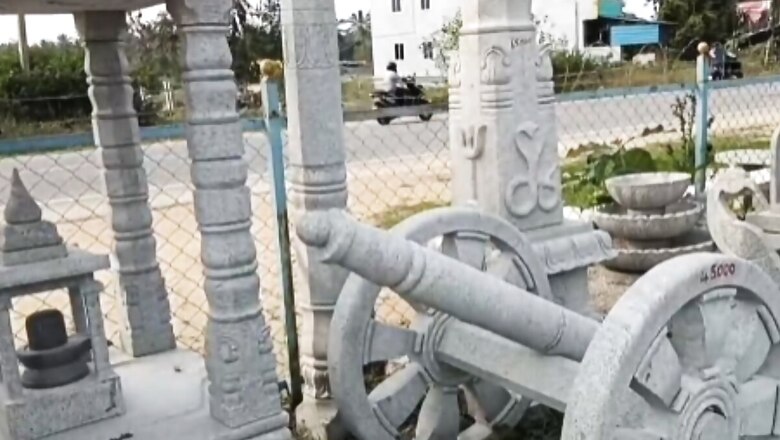
views
During the ancient times, artisans spent years carving religious idols, flag poles, and chariot wheels with rock through manual labour. In modern times, contemporary methods are such that one can extract rock blocks within a single day. The integration of technology has significantly sped up work processes, reducing the time needed for various tasks. In Andhra Pradesh’s Chittoor District’s Kuppam Constituency, there’s a shop which specialises in carving idols on stone blocks, offering a range of products at reasonable prices. It is located along the national road from Kuppam Pes Hospital to Kuppam town. Named Sri Tirumala Stones shop, it is owned by a man named MK Vijayakumar. The shop sells attractive toys, temple-construction flagpoles, children’s toys, wedding mandapams, Tulsi forts, and traditional cooking utensils used in ancient households.
Carving figures on rocks demands a higher level of dedication than expected, according to stonecraft practitioners. They perceive their craft as an acquired skill similar to a hereditary profession. Despite challenges, they remain determined, citing a sense of duty towards their teachers and education system.
The Barabar caves in Bihar feature the oldest rock-cut architecture from around the 3rd century BC. Other early cave temples, mainly Buddhist shrines and monasteries, exist in the western Deccan, dating between 100 BC and 170 AD. Probably, these caves were initially accompanied by wooden structures, which likely degraded over time.
Advances in rock-cut architecture, showcased in the Ellora Caves, continued, reaching its zenith with the monolithic Kailash Temple. Even in the 21st century, discoveries of relatively small rock-cut sites, mainly Buddhist, are ongoing, particularly in the Deccan region.
Indian rock-cut architecture surpasses other forms globally, in both variety and abundance. This architectural style involves carving structures directly from solid natural rock, removing non-structural rock until only the excavated interior’s rock remains. Primarily religious, Indian rock-cut architecture stands out for its prevalence and diversity.



















Comments
0 comment